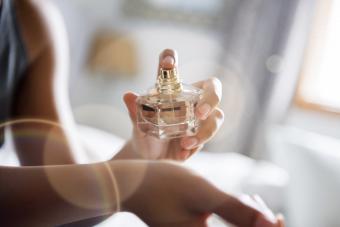
Getting indoor tanning salon information before you bronze can save your skin and your health.
The Truth About Tanning
It is very unlikely you've heard positive things about tanning lately. Everyone from the media to cancer activists are devoted to the spreading of indoor tanning salon information and with good reason. Tanning is unhealthy, and much like some of society's other ills, like smoking and recreational drug use, excessive tanning can lead to serious health issues.
The most prominent health concern is skin cancer. Tanning in any form is damaging to your skin and can cause or accelerate the development of skin cancer. The only way to avoid this is to make a commitment to always wear sunscreen when you are in the sun, and to avoid prolonged exposure whenever possible. There are ways to achieve a healthy tan without baking in the sun or under tanning lights, and the sooner people realize this, the bigger opportunity they have to save their skin from permanent damage.
Indoor Tanning Salon Information For Addicts
If you are one who insists on visiting the salon despite the health risks associated with tanning, then it is important you know exactly what your skin is going through. How do tanning beds work and how long should you stay in them?
Most tanning beds contain two types of bulbs - UVA and UVB.
- UVA bulbs cause your tan and can also trigger premature aging.
- UVB bulbs contain "burning" rays, identical to those coming from the sun.
In conventional tanning beds, you develop a base tan over a month's time, laying in the bed for up to a half an hour every other day. These beds are the most primitive form of tanning beds due to their excessive skin damage risk. However, when you research indoor tanning salon information, you find these beds are used at most mainstream salons and many consumers do not know exactly how they work.
After you have reached your ideal color, you will still have to visit a conventional tanning bed 2-3 times a week in order to maintain your preferred shade. This can lead to an unhealthy addiction to tanning beds, which is why you often find women sporting a "leathery" look to their skin.
UVA only beds are an alternative to the conventional tanning bed. Tanning instructions dictate you need only tan a handful of times in order to develop an idea color. While many people believe tanning less with the complete absence of UVB rays is healthier for you, it still poses a huge risk. All UV rays will cause a significant amount of skin damage, so supplement your bed tanning with a sunless tanner or just take a break from being bronzed in general.
The Cost
Besides risking your health, indoor tanning is pricey. Assuming you pay around $30 per session, you can expect to pay around $600 just to obtain your base tan. Even with the UVA only beds, you will still be putting down a lot of cash to maintain your summer glow.
If you are looking for a safer and more economical way to tan, consider one of the many varieties of sunless tanners available for purchase. They are much more inexpensive than indoor tanning and are worlds safer for your skin. Some great brands include Banana Boat and Coppertone.
Many still associate sunless tanners with the stigma of having orange stained skin as a result. However these products have improved greatly since your last attempt at using them. Now able to quickly deliver a natural color, countless women are beginning to turn to these bottled tans rather than going the old fashioned route. The recent negative press regarding summer skin health has caused both genders to be more conscientious about the state of their skin.
If you are still considering visiting an indoor tanning salon, remember there are certain people who should absolutely abstain from such practices. Some examples of these include
- Individuals under 16 years of age
- Those who have a history ofsevere sunburns
- People with fair or pale complexions
If you cannot achieve a tan naturally in the sun, you will not achieve it under artificial light. Just like in nature, a tanning bed will cause you to burn or not tan at all.
- Those with moles or a multitude of freckles
Exposing pigments such as freckles to UVA/UVB rays is never a good idea,as it can accelerate your risk of skin damage or cancer.
- Anyone taking certain medications
This can have a disastrous effect when combined with this bronzing method. Consult your doctor for specific medication risks.
Lastly, anyone with a history of skin cancer in their family should stay away.
Tanning may be tempting, but remember your health should always be your first concern. Skin cancer and other physical conditions are too high a price to pay for a temporarily gorgeous exterior.







